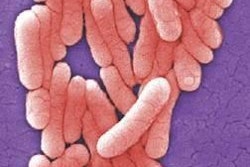Agriculture Secretary Tom Vilsack last week presented USDA's first round of testimony before the House Agriculture Appropriations Subcommittee that soon will begin drafting the department's budget for fiscal 2012. Over the coming weeks and months, the subcommittee will hear from the heads of many of the department's agencies and major policy areas who will present details of the president's proposed budget.
During the course of his recent appearance, Vilsack had to deal with questions from panel members who not only wanted additional information about President Obama's FY 2012 budget proposals, but also how the department was proposing to handle the more than $5 billion in proposed cuts for USDA that are included in the FY 2011 spending bill (HR 1) that would fund the government through September.
Subcommittee Chairman Jack Kingston (R-Ga.) led the questioning and focused on international food aid, an area which his subcommittee has proposed a more than 40 percent cut in HR 1. Kingston asked Vilsack what kind of return on investment the U.S. receives in goodwill and support. "When we talk about this is national security or this is building relationships, there should be some metrics on it," Kingston said. "I think we should look at what we're achieving." He noted concern that farmers in developing countries may be harmed financially because they cannot compete with the commodities the United States sends overseas.
Turning to conservation, Kingston said the conservation reserve program should be closely examined to see how many of the 32 million acres enrolled actually are "environmentally sensitive," which is a requirement for putting farm land into the program. "I think it's very oversubscribed," Kingston said about CRP. "I think it's paying farmers not to farm in many cases."
Vilsack responded that the program achieves its mission of preventing the erosion of millions of tons of soil into rivers and streams and that there is little financial incentive for farmers to tie up productive land for several years, especially given the current high price of crops. "I think we have to take a look at [the program] but I think we are focused where we need to be," Vilsack said.
Kingston's opinions regarding the CRP likely puts a greater congressional focus on the program. As a consequence, it is increasingly likely that Congress will move to lower the maximum number of acres allowed in the CRP when writing the 2012 farm bill.
Regarding budget cuts ahead, Vilsack said USDA could manage them provided they were spread out and not concentrated over a few months. "Give us time to manage," he said. "When you squeeze it into a four- or five- or six-month period, it is a large cut."
As an example, Vilsack noted proposed cuts to the department's Food Safety and Inspection Service. "If you're cutting FSIS, all you can do is [cut] personnel," he said. "You don't have enough time to do it in a thoughtful way. That's why the president proposed this freeze over five years to give us time to manage."
Regarding other budget-cutting areas, Vilsack said wealthier farmers can afford to give up subsidies to help reduce the federal budget deficit. "With farm prices as strong as they are today we think it is appropriate to ask the most successful farmers to consider perhaps receiving a little bit less than they have been receiving," Vilsack said.
The Obama administration's FY 2012 budget proposals recommends tightening the income eligibility standards for receiving annual direct payments and other forms of commodity subsidies. The proposal would cut off payments to people with more than $500,000 a year in farm income and $250,000 in off-farm earnings. The caps are now $750,000 and $500,000 respectively.
Subcommittee members also wanted to talk about direct payments. Rep. Tom Latham (R-Iowa), for example, worried that lowering the income eligibility cap on direct payments would require reopening the farm bill, and urged that any such move should wait until Congress has a chance to fully debate the matter when it writes the 2012 farm bill. Vilsack's response: "It's a new day. 'We're talking about a lot of things we haven't talked about before."
While Vilsack said it is Congress' role in writing a new farm bill, he suggested a rethink of the around $5 billion paid out in direct payments annually no matter the commodity price. "We are confronted with the challenge: Do we want a safety net system that provides some resources to farmers on an annual basis regardless of how good the ag economy might be that particular year as opposed to something that would provide significant assistance and help when it is most needed?" Vilsack asked.
Direct payments account for nearly 80 percent of the projected farm program payments over the next ten years. This, among other reasons, is why direct payments eventually will be a key area lawmakers will review to come up with future budget cuts for agriculture's contribution to budget deficit reduction. This is also why some state commodity groups and a few farm-state lawmakers want to move direct payments to another farmer safety net, such as crop insurance, an improved average crop revenue election (ACRE) program or some other risk management program.















